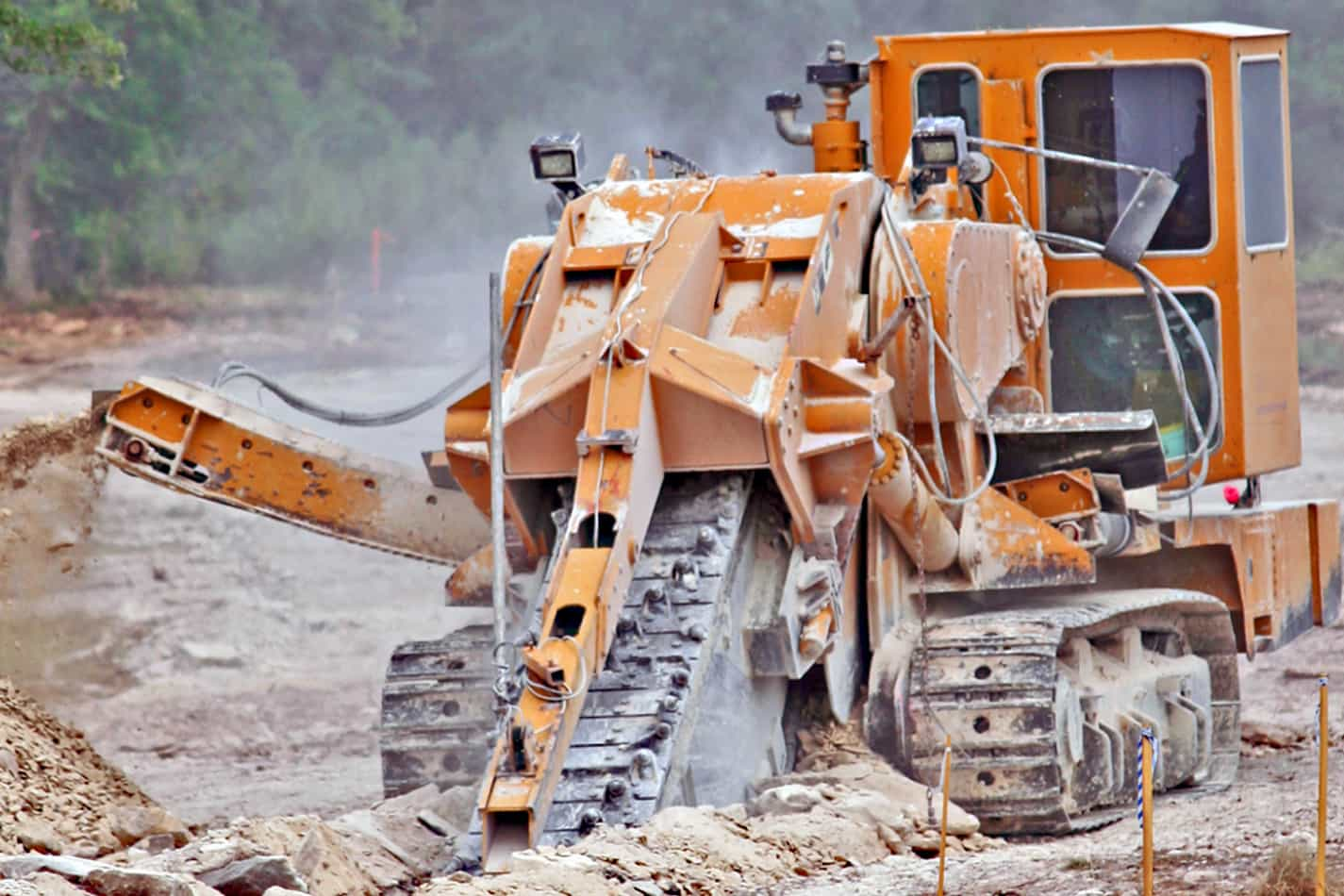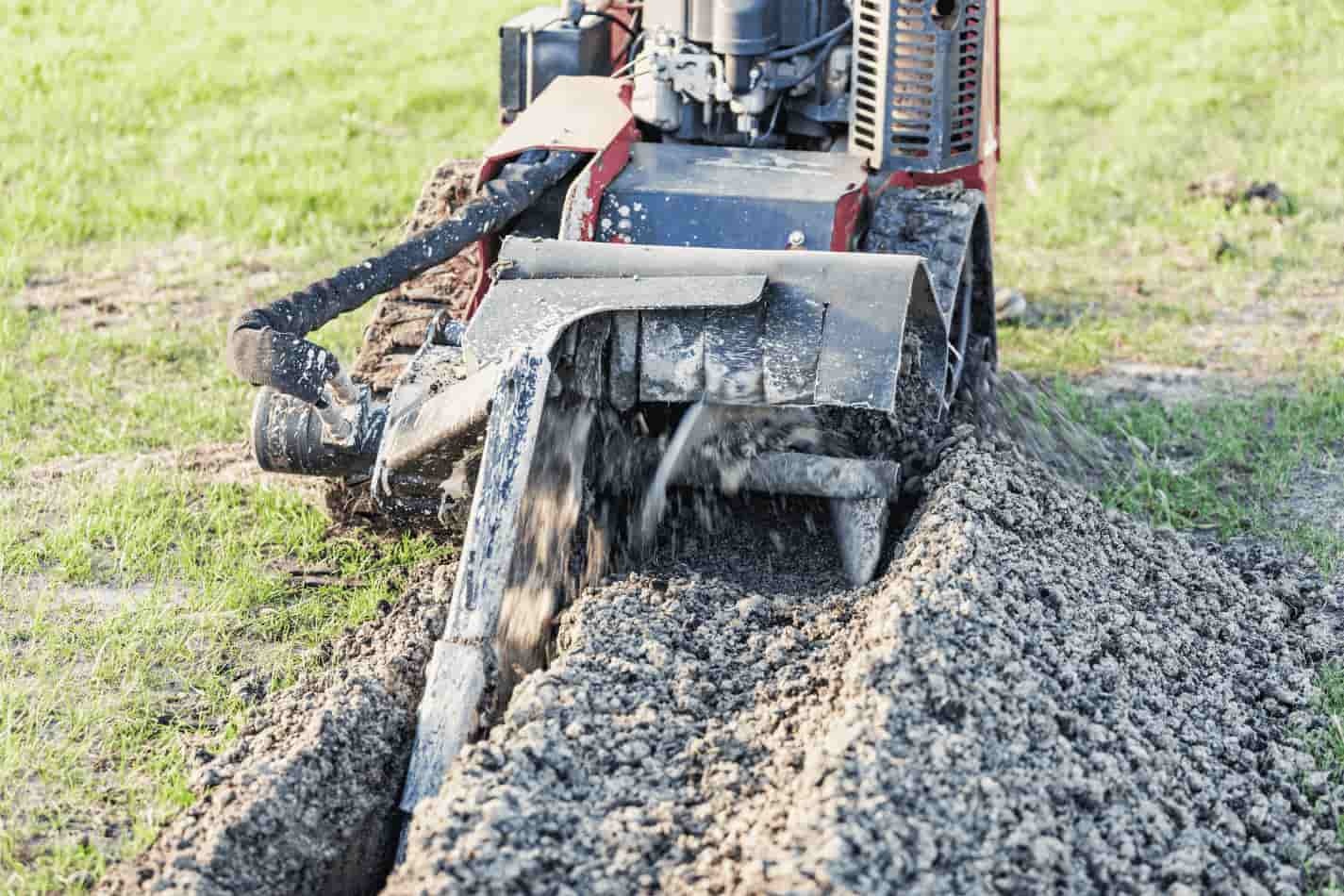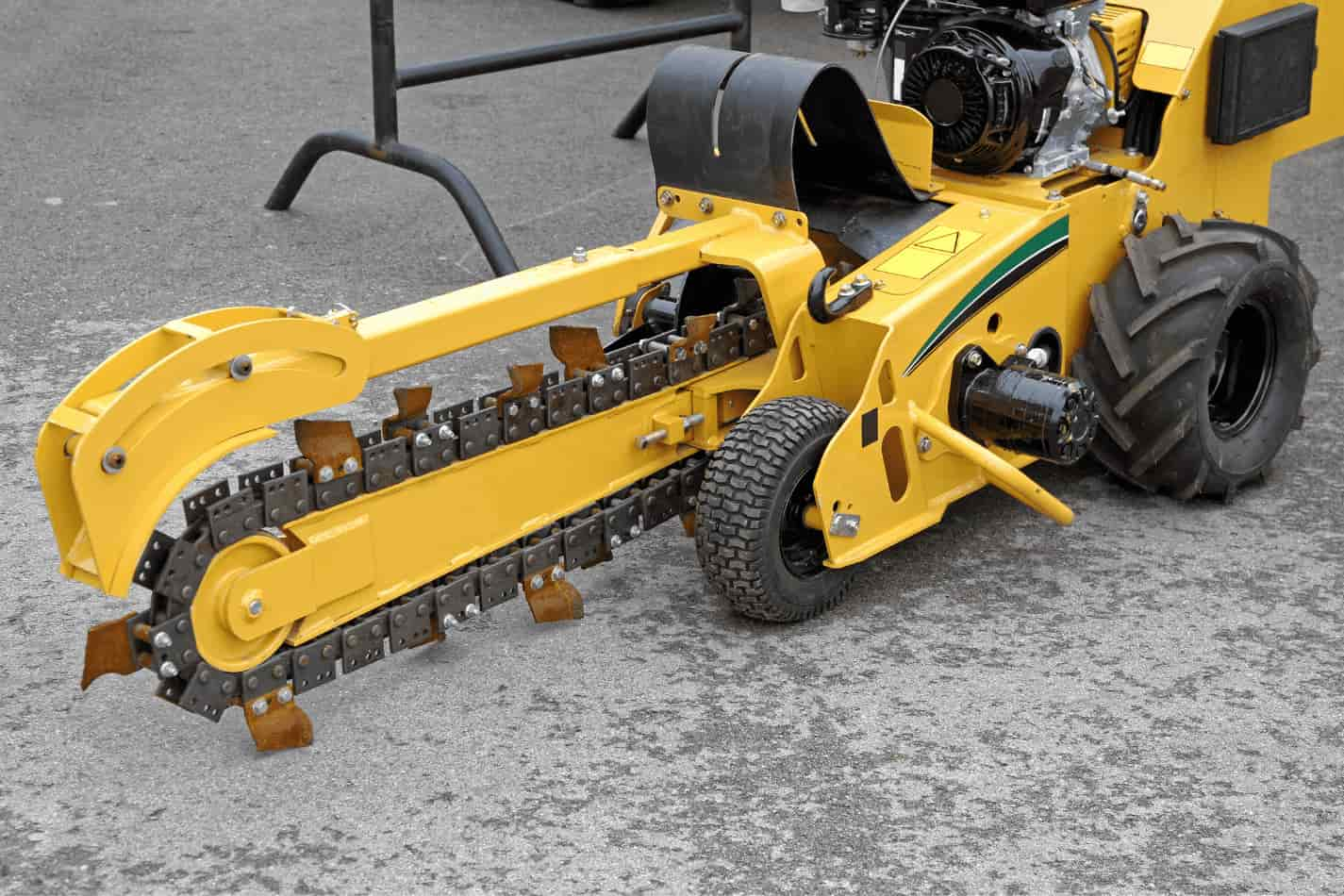Trenchers are equipment that may improve an irrigation crew’s workload and boost productivity while on the job. There isn’t a trencher suitable for every project, but there are a few things to think about before buying or renting one.
Among the many things that landscape contractors worry about when renting/purchasing a trencher is ‘how long is needed to dig and how fast to finish”. If this is among your worries, then look no further. This article has got you covered.
The short answer is a good working trencher of 100 linear feet will take roughly 12 hours to dig. You can calculate the work period by multiplying the linear feet you need to dig by 0.12. However, how fast you finish depends largely on the trencher power and the soil environment.
Read on to learn more!

How fast does a trencher dig?
As stated above, how fast a trencher will dig is totally dependent on the soil type and trencher power. With a large enough machine, just moderately big roots, no massive boulders, and relatively workable dirt, you’ll be able to go ahead quickly.
A basic 10 HP unit will run fast enough that you’ll have to chase it down nearly, but the conditions will dictate how quickly you can run it while operating. On the other hand, rocks will be a huge stumbling block, basically increasing the time you’ll put in to dig.
Which machine digs faster: trencher or excavator?
Trenchers and excavators are machines used to cut through and remove rocks or soils from the earth.
To complete a task, an excavator must set up, plunge, pull, swing, dump, and repeat the process, which takes time.
On the other hand, trenchers can remove the same rocks and soils in a single continuous movement, allowing you to travel from point A to point B as soon as feasible. As a result, a trencher can work 3–4 times faster than an excavator in many situations.
What should I look out for when renting a trencher?
If you’re looking for a trencher rental near you but aren’t sure which trencher you should go in for, then consider the following.
To begin, assess your project’s needs; required trench size, kind of installation task, and degree of environmental disruption are all considerations to consider when selecting the right trencher leasing; including the kind of project, the horsepower, footprint, chain width, and boom depth of the equipment.
The overall size of the trencher required is determined by the number of linear feet being trenched and the width/depth of the trench.
As an operator, you should also examine the type of utilities being placed and the appropriate chain width and boom depth. Many utilities require varying depths and widths for appropriate installation and code requirements.
Then, consider the kind of situations that could be encountered in a typical application. Consider the trencher’s chain width, boom depth, and machine footprint when doing so.
Also, it is worthy to note that chains come in various shapes and sizes. Choosing the right chain for soil, rock, frost, and mix will ensure the optimum results and chain/machine lifespan.
Finally, you’d want to decide if the trencher is operated by a single operator or numerous operators, as this affects how you think about the machine’s controls.
Dedicated operators are harder to come by and more expensive. With the labor market tightening, machine controls must be simple for people of various skill levels.
Is it possible to trench with a chainsaw?
Yes! Chainsaws are excellent for digging trenches, but they have certain drawbacks, so consider all of your alternatives before choosing the best approach for this project.
Is it possible to operate a trencher in the mud?
It’s easier for muddy earth to compress than dry soil. Although a trenching hoe is frequently used to remove dirt in a trench, the hacking action required creates mud splatters.
Because muddy dirt is already rather soft, the equipment isn’t really required for this endeavor.
How long does it take to dig a hole that is 4 feet deep?
Digging a hole 4′ deep, 3′ broad, and 4′ long, for example, can take anything from 1 to 4 hours. It all relies on the ground conditions and the digging abilities of the person doing the digging.
What is the depth of a trench?
Trenches are usually 8 inches broad and 24 inches deep. However, your city or county may have unique rules that define the project’s size. A water pipe, for example, could need to be 24 inches deep, whereas a drainage pipe would need to be 36 inches deep.
Is it worthwhile to invest in trenchers?
The first major advantage of hiring a trencher is the reduced wear and stress on your body. Digging a trench by hand may be exhausting labor, especially if the ground you’re dealing with is rough or has impediments such as buried pavers or concrete pieces.
What is the Maximum Depth That Can Be Achieved with a Backhoe Excavation?
When undertaking a backhoe excavation, it is crucial to adhere to deep excavation safety guidelines to ensure the maximum depth achievable without compromising safety. These guidelines are designed to minimize risks associated with deep excavations, protecting both workers and surrounding structures. Following these guidelines will help maintain a safe working environment during backhoe excavations.
How Much Does Digging a Trench Yourself Cost?
If you don’t mind getting dirty and can dig successfully, digging a trench by yourself is a rather simple task. The rental of a micro-trencher costs roughly $125 per day, but if you have your own, you’ll save money. You should also have the following goods on hand:
Plywood sheets ($20 for one), $5 for a roll of flagging tape, $12–$100 for shovels and spades, hand pump with a diaphragm: $90.
On the other hand, the installation of utilities should be left to the utility provider or any professionals you engage.
Tip:
Make sure to avoid doing the following during digging?
- Do not begin excavating until the buried services have been located and de-energized.
- Do not go deeper than 1.2 meters into an exposed trench (4 feet).
- Before entering a trench, test the air for harmful gases and vapors, as well as a shortage of oxygen.
- Pipe sections, spoil piles, disused tools, lumber, and other things should not be placed within 1 meter of the trench’s edge.
- Working with suspended or lifted weights and materials is not recommended.
- Natural freezing should not be used as a method of soil stabilization.
Conclusion
To conclude, when it comes to trenchers, you have a few choices, including whether to go with a walk-behind or ride-on equipment.
When it comes to making that decision and determining the time needed to finish the task, the kind of soil in your location might have a significant influence on the equipment you select.
Thanks for reading to the end. We hope you learned!




